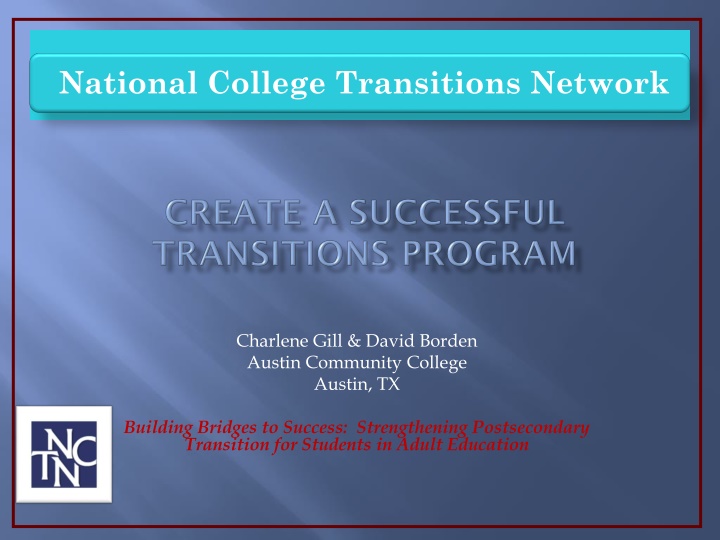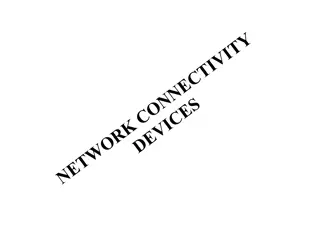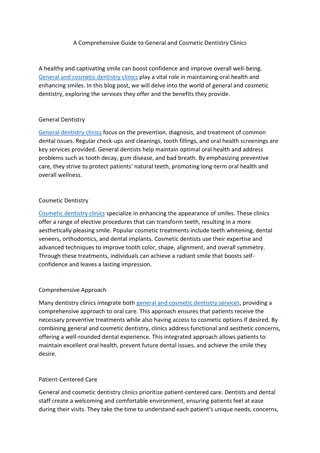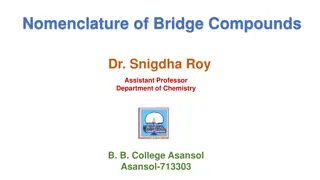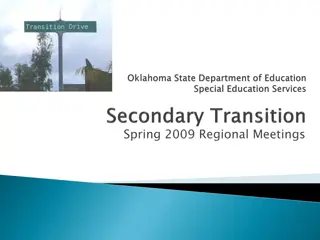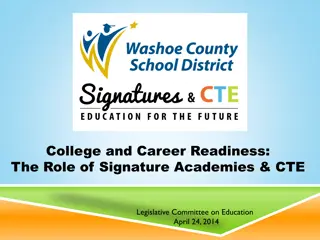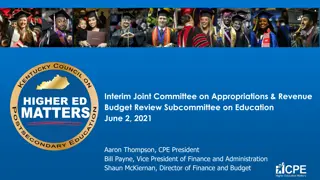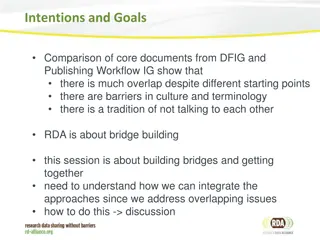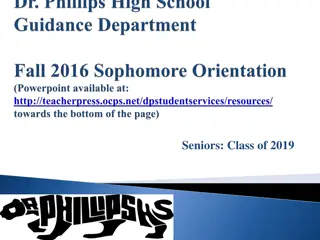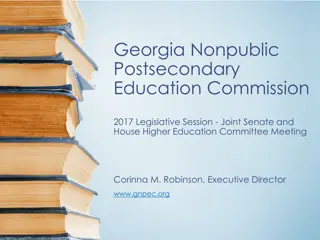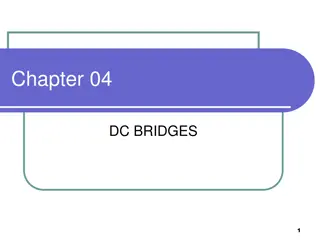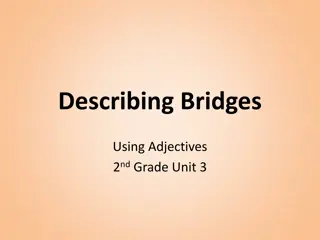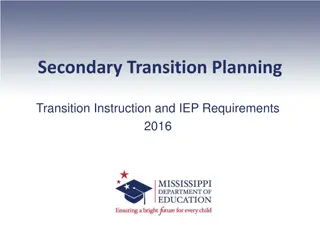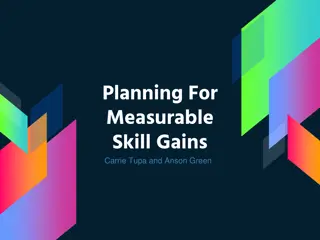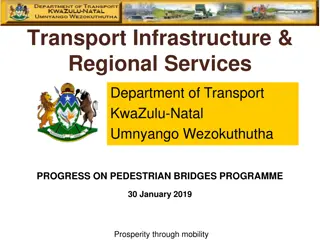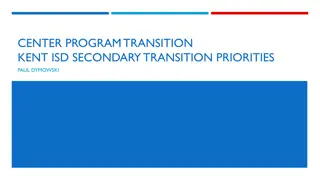Building Bridges to Success: Strengthening Postsecondary Transition for Students
This resource discusses the National College Transitions Network's program designed to help non-traditional students bridge gaps between high school and college. It covers program creation, design, evaluation, and key goals for student success.
Uploaded on Apr 04, 2025 | 1 Views
Download Presentation

Please find below an Image/Link to download the presentation.
The content on the website is provided AS IS for your information and personal use only. It may not be sold, licensed, or shared on other websites without obtaining consent from the author.If you encounter any issues during the download, it is possible that the publisher has removed the file from their server.
You are allowed to download the files provided on this website for personal or commercial use, subject to the condition that they are used lawfully. All files are the property of their respective owners.
The content on the website is provided AS IS for your information and personal use only. It may not be sold, licensed, or shared on other websites without obtaining consent from the author.
E N D
Presentation Transcript
National College Transitions Network Charlene Gill & David Borden Austin Community College Austin, TX Building Bridges to Success: Strengthening Postsecondary Transition for Students in Adult Education
Part I (2:453:25): How to Create a Transitions Program Step-by-step process Part II: (3:25 3:55): Application: Program Design Participants work on designing their own programs Part III: (3:55 4:05): Group Share, Q & A Participants share designs and questions Part IV: (4:05 4:15): Evaluations
PART I: Overview of Transitions Program Most Important Success Factor Step-by-Step Instructions
KEY GOALS Provide students with the skills, knowledge, and confidence to bridge the gaps academic, psychological, and financial between GED/high school and college Ensure students achieve BOTH College access College success
Sites Vary by program; most are housed at community colleges in Adult Education departments, but others may be set in community-based organizations, public schools, or even prisons Students Typically non-traditional meaning they are over 25 years old, have been out of school for an average of 5 years or more, work full time, and have children or other dependents
Funding Varies by program; some are funded by private business or non-profit organizations; others by their college or university. Most are grant funded by state or local governments (almost all are tentatively funded). Evaluation Also varies by program; some programs hire external evaluators, while others undergo mandatory evaluations by their funders
A). How much money the program is awarded. B). How many hours the students attend each day. C). Students performance on pre and post tests. D). The program s leaders dedication to the mission. E). Which campus or site on which it is held. F). None of the above
Answer: D). The Leaders dedication to the program s mission. Hire a knowledgeable, dedicated, and caring leaders who believe in the program and the students. All else will fall into place.
The Program Leader(s): (ex: director or coordinator) They CARE about the students. They are DEDICATED to the students. They are KNOWLEDEGABLE for the students. They BELIEVE in the students.
Student-Centered Serve the best interest of the student in the long run. Staff, funders, and instructor needs count, too, but ultimately we all (staff, funders, and instructors) are investing in the students, so the best way to serve everyone is to serve the students.
In other words, a guiding question to ask when facing any programmatic issue is: What is best for the students?
Student-Centered= Center the program design on the students and their needs Convenient Class Times Flexible, Customized Instruction Identify barriers specific to each cohort and teach success strategies
Student-Centered= Begin with the end in mind: College success Develop long-term thinking and planning skills Balance of support system with encouraged independence(demonstrate, supervise, release)
Enforced Attendance Policy 85% attendance required in BOTH classes Attendance checked daily by instructors, monitored by program coordinator/director Incentives to encourage Remember, though, life happens be fair and understanding
Intensive, Fast-Paced Design 12 20 hours per week of intensive, fast-paced instruction DEVM0330+0370+0390 + DEVR0330+0370+0390 + DEVW0330+0370+0390 + =Transitions Program Short Overall Time Commitment (vs D.E.) 1 Semester (5, 8, 10, or 16 weeks)
Rigorous, Collegiate Curriculum Syllabi Mirror College Credit Classes Eng 1301/1302 Math 1332/1370/1342 Grades (Unofficial) Plenty of feedback
Community, Cohort-Based Students enter and exit together Students work in study groups Students take classes together afterward Former students return to program to help and encourage new students
College Success Activities Study Skills/College Success Workshops College Connection Financial Aid Workshop College Technology Workshop Library Tour & Research Tutorials Enrollment Event
Incentives $100 $100 $150 $1,000 iPad
What is your programs core mission, underlying philosophy, and goals? How will you determine whether potential leaders believe in this mission and its goals? Do you anticipate different or conflicting goals or requirements of your funders or institution? If so, how could you reconcile them?
Howexactlywill you measure your success in reaching goals and fulfilling program mission? Who will measure this success? How often? (each semester, each week, every year, once per month?) What plans are in place in case of difficulties?
How: # of students become TSI complete # of students who enroll in college & pass course # of students who persist to 2nd semester & beyond # of students who earn certificates and degrees Who measures success: Program Coordinator Program Assistant Instructors College Advisors
How Often: On-going Every semester Overcome Difficulties: Tutoring Conferences Math Levels Bus Passes
Write Specific Plans: Hiring Plan Recruitment Plan Design Plan Evaluation Plan Class Schedule
Coordinator hiring committee formed by May, 2014 Coordinator hired by June 1, 2014; begins work in late June Instructor hiring committee formed by mid-July Instructors hired by August 1, 2014 Assistant(s) hired as needed, by mid-August at the latest
(All conducted by Coordinator) Student recruitment in GED Classes (July) Newspaper advertisements (July and early August) College homepage advertisements (late July & early August) Partner institution recruiting (July & August) Advisor notification (July & August) Letters sent to students (late July)
3 cohorts per year, total of 50 students TSI & LASSI tests (pre & post) 12 hours per week for 12 weeks (3 hours per night, 4 nights per week) 60 hours of math, 60 hours of integrated reading/writing 12 hours of study skills College Connection, Enrollment Event, and Career Workshop
Instructor Meetings Scheduled by late August Class Observations Scheduled by mid-September Mid-Semester Evaluations: Mid-October Student Conferences: Early & Mid-October External Evaluator Visit Complete by Nov 1 End-of-Semester Evaluations Completed by final class date (All conducted by Coordinator)
Include: Your program s core mission Your program s target goals Your hiring, recruiting, and evaluation plans Your course schedule and any standardized assessments/measures students will complete
https://docs.google.com/a/austincc.e du/document/d/1qhfx6KYEKjmGvrN y5Sw4YIwThdKBpvQM
Include: Director and/or coordinator Instructors Textbooks? Scholarships? Incentives? Bus Passes? Parking Permits? Other Office Supplies? Testing Fees?
https://docs.google.com/a/austincc.edu/spreadshe et/ccc?key=0AgjgEQjWRIG7dGxTRTNTXzlkZ19jeDl
Possible Funding Sources: State Government U.S. Dept. of Education Workforce Solutions Boards Your Community College
Complete College Texas. Complete College America Report, April 2013. Connelly, David. College Knowledge. Jossey-Bass, 2005. Gittleman, Julia. New England ABE-To- College Transitions Project Evaluation Report. NELRC. June, 2005.
Design Your Program Applying what you learned in the first part of the workshop, begin designing your own Transitions Program. Include in your design: Program Mission Statement Program Goals Hiring, Recruitment, and Evaluation Plans Course schedule Potential Funding Sources Budget
Part III: Discussion Share Your Ideas w/the Group! Share Your Ideas w/the Group! Optimum number of weeks & hours per week? Course schedule? Special visitors or presentations? Student Recruitment Plan & Interview Questions? Instructor Recruitment Plan & Interview Design? Program Evaluation Plans?
Thank you! Contact info Contact info: : Charlene Gill Charlene Gill (512) 223 (512) 223- -5122 cgill@austincc.edu cgill@austincc.edu http://www.austincc.edu/transitions http://www.austincc.edu/transitions/ / 5122
